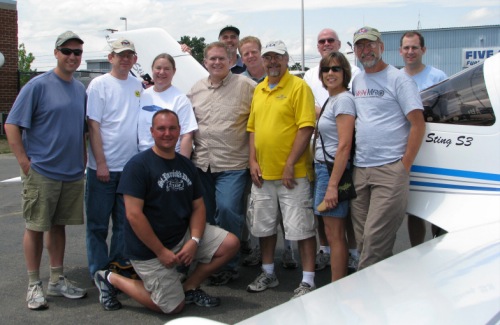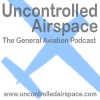The headline from today's AOPA Aviation eBrief says this: "
General aviation applauds changes to TSA Security Directive." The AeB references a story by an old friend in aviation journalism, Benet Wilson, as sound, sturdy and sober a realist as you're apt to find in the business -- particularly that part of the aviation journalism community anchored inside The Beltway.
So the gist of the story never felt questionable or in-doubt to me.
No, what made me stop and cogitate was the
concept represented by the headline and the underlying story. Aviation group leaders in essence applauded an
uncommon application of
common sense by the uncommonly obtuse at the TSA.
Seriously. Think about this for a brief moment.
Back last year here came the TSA with another cockamamie regulation issued not as a proposed rule but as a
fete de compli -- a done deal as Security Directive SD 1542-04-08F. It came out of the blue aimed at all tenants of airports with any level of commercial serviced.
The requirement: each airport impacted must write and get approved a new security program for creating and issuing steenkin' badges to all tenants and those who want to move around the movement areas. Oh, yeah, the program has to show how the airport's program will assure fingerprinting, criminal background checks and the issuance of new badges specific to this program.
The rules require each airport to come up with its own steenkin' badge -- steenkin' badges only legal at the airport of issuance. Without a steenkin' badge, everybody using the movement area of such airports must be escorted by someone with a steenkin' badge -- or else that person and the airport could be in deep skeenk.
Brilliant.
Now prior to this new steenkin' SD, airports at which GA and Common Carriage Carriers shared access to ramps and hangar areas already lived with such steekin' badges requirements; no real incidents are cited or known about other airports at which GA and Common Carraige Carriers have their own, separate and distinct, operating areas, while sharing a runway.
So no idea what problem this steenkin badge idea deems to solve. They won't say -- at least, beyond the boilerplate "to enhance the security of"...like the Cheetos tiger intones, "Blah, blah, blah."
And it gets better, of course. The TSA also never made available a full list of affected airports -- nor did it publicly reveal the full details of the program. You know, the Catch 22 of the War on Terror:
You must follow rules, but you can' t know what they all are because you might use them! Maybe to comply!!
Yeah, right...can't have people actually knowing enough to comply, now, can we? The might help the terrorists, you know.
So the applause seems a little bit like applauding your boxing opponent because he stopped hitting you after knocking you down.
It makes little sense from my seat. Applauding a reduction in ridiculousness should actually involve reminding the TSA of the steenkin' badges aspects of this whole mess: use of directives to avoid actual user-involved rulemaking; no use of common sense in the structuring of the program or the rules underpinning it. No complete info available to the public.
So letting transient pilots hit the head or go to the phone to call for service is some small progress, a tiny victory over the total "Duh?!?" of the original document. And accepting an ill-advised rule enacted by a dubious process for a doubtful purpose warrants no applause from my seat.
We can't keep accepting little losses from this agency in hopes it will wise up later; we keep up the pace of lost access and flexiblity liked that proposed in the Large Aircraft Security
Program proposal, adding further government control access and flexiblity, and we'll be on our way to extinction as a mode of personal and small-business travel.
Instead of applauding the TSA showing a tiny bit of common sense, we should be showing uncommon unity and calling for the agency's sunset.
Maybe then we as a community can create an agency capable of meeting both sides of its mission: enacting sensible protections without nonsensically stifling private aviation and commercial -- something, somehow, the TSA has managed not to visit or otherwise eviscerate rail and bus, truck and car rentals, or private maritime travel.
It's time aviation got as much consideration. In the meantime, no applause from this cockpit.
-- Dave


 UCAP Fodder
UCAP Fodder
